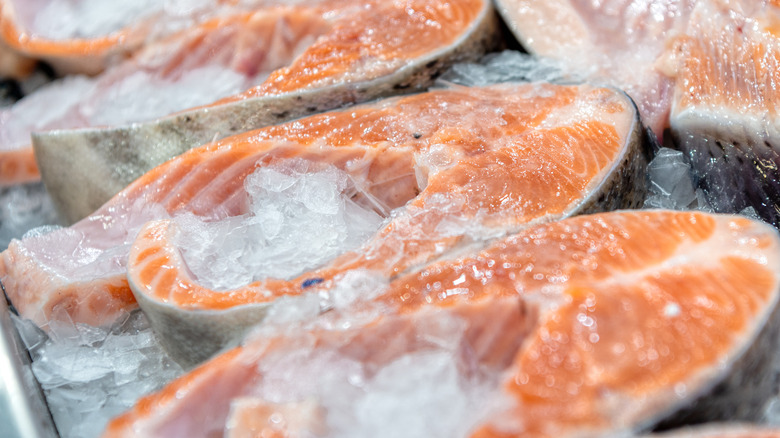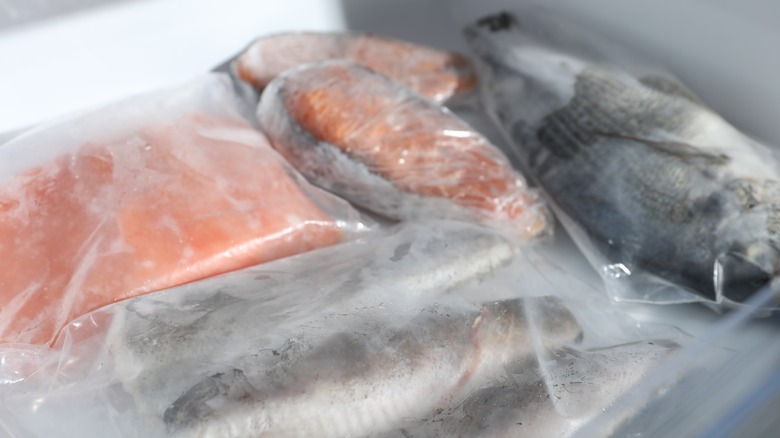What Does It Mean To Glaze A Fish Before Freezing It?
Whether you're a connoisseur of salmon, prefer something milder like halibut, or enjoy the delicate sweetness of mahi-mahi, fresh fish is not only tasty but a great source of protein. Unfortunately, even if you store fresh fish in the fridge, it only keeps for a few days at the most. But that doesn't necessarily mean you need to prepare it right away. Freezing is a smart way to preserve the fish's quality and get the most for your money. But, freezing is something that must be done the right way to maximize freshness and flavor — and that's where glazing comes in.
While wrapping your fish in plastic wrap, or — even better, a vacuum-sealed bag — might get the job done, a glaze is the ultimate storage hack to get the most out of your fish for the longest period of time. Simply put, glaze refers to a layer of frozen water that surrounds the fish. This ice creates a protective moisture barrier that locks in flavor and texture. It also prevents the fish from having any contact with air, meaning you'll get none of that pesky freezer burn. The less oxygen inside of the container you store your fish in, the better.
How to glaze your fish at home
Ice glazing is a well-known process that is commonly used in professional kitchens. But it's also something you can do at home, and there are a few different ways to go about it. The simplest route is to first rinse your filets in cold salt water with ice to remove any excess slime. Then, fill a plastic bag with cold water and submerge the fish before sealing it tightly and storing in the freezer. Although not technically the official glazing process, this easy hack lets you mimic the technique at home. Another simple method is to dip the fish in cold water, place it on a sheet pan in the freezer, and let that water freeze. You can then repeat this until you get a nice, ¼-inch thick glaze around the fish before sealing it in a bag.
A proper ice glazing involves a bit more time and effort. Similar to brining your fish, pretreating your fish can further help safeguard flavor. But how you pretreat it depends on the kind of fish you have. A fattier fish like salmon requires a 20 to 30-second dip into ascorbic acid and water, and leaner cuts like cod or tuna can just be dipped in salt water for the same amount of time. From there, you can move to the process of ice glazing on your sheet pan and storing the fish in a bag. Whether or not you take this extra step, glazing is clearly a method you must try out.

